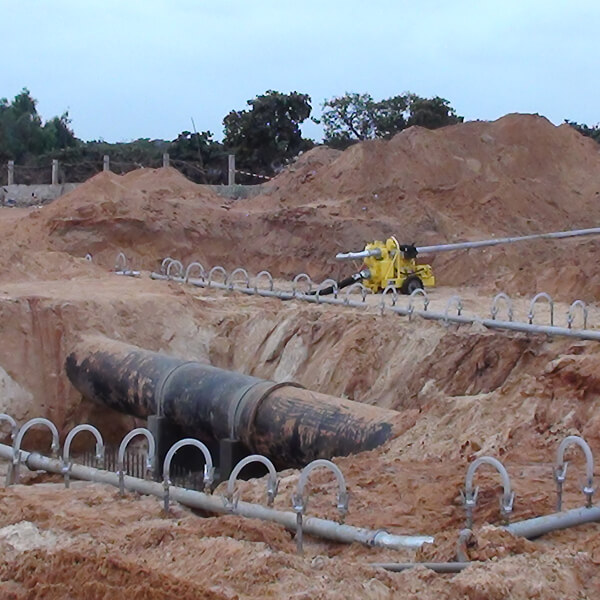TYPICAL INSTALLATION

LOOP SYSTEM
The manifold, in the ring system, is laid along the perimeter of the excavation tocircumscribe the area of intervention. It is the most frequent type in cases where a continuous strip foundation needs to be created. The quantification of the equipment necessary for assuring perfect performance is determined by two basic elements:
- Geological composition of the soil
- Perimeter and depth of the pit
TIERED SYSTEM
If excavations require the reduction in the level of groundwater to exceed 5.00/5.50 meters, a technique called “tiered wellpoint system” is used. According to this methodology, in the first phase, a first ring of wellpoint systems is arranged along the outer perimeter of the expected measurements of the embankments. This first system, once started, will result in an initial reduction in the aquifer that will allow for a partial excavation to a depth determined by the level of groundwater obtained. At the bottom of the pit dug, a second ring of wellpoint systems will be set up to cause a second lowering of groundwater level thus allowing for excavations which are deeper.


EXCAVATIONS IN PROGRESS
Typically used to ensure the reduction of the groundwater level in all those jobs which involve continuous progress such as the laying of new underground pipelines, the wellpoint system provides for reduction in the groundwater within the area in which it operates while ensuring the continuity of the operation at the moment in which the site needs to open a new excavation front. In this case, the quantification of the equipment is more complex. In addition to the elements discussed previously, it is also determined by:
- Section of the excavation
- Daily progress of the excavation